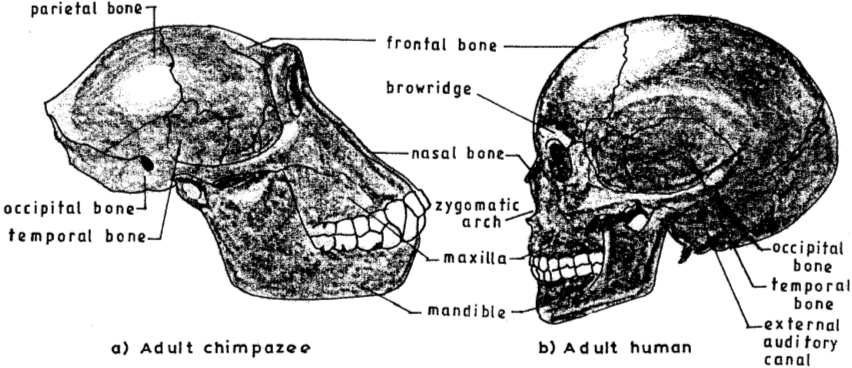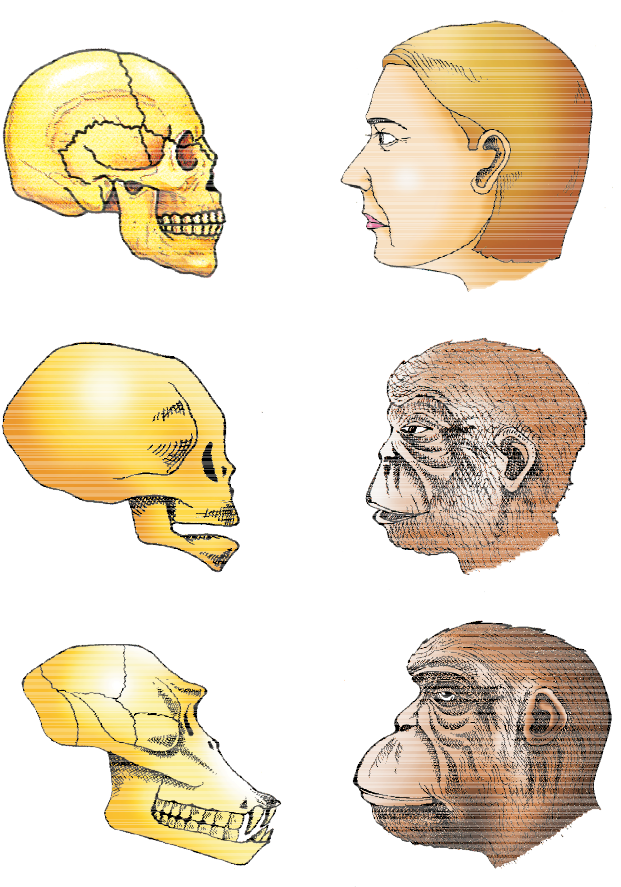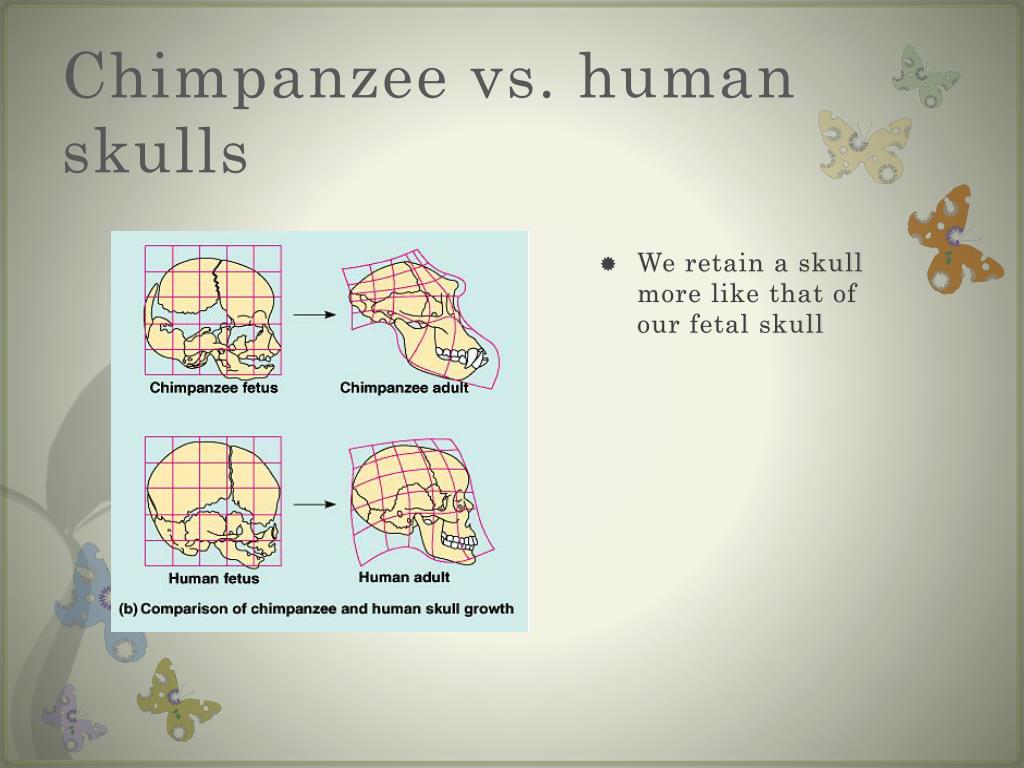
The possible changes have been evaluated by comparing two close species essentially differentiated from each other by spoken language. Objectives: The present study explores the hypothesis that the anatomical bone structures of the oral cavity have probably evolved under the influence of language function. 3Department of Histology and Anatomy, Miguel Hernández University, Elche, Spain.2Department of Physical Medicine, University of Alicante, Alicante, Spain.1Department of Oral Medicine, University of Murcia, Murcia, Spain.This helped determine whether the chimps' attention was drawn specifically to facial cues, such as teeth.Ambrosio Bermejo-Fenoll 1*†, Alfonso Panchón-Ruíz 2† and Francisco Sánchez del Campo 3† Finally, in a third experiment, only the images of chimpanzee skulls were used, in the frontal and diagonal orientations. The intent was to determine whether the chimp faces were the driving factor in drawing the subjects' attention. Each group of four images showed either a skull, a face, or stones in the shape of a skull, and those three types were also shown in three different orientations (diagonal, frontal, and lateral).Ī second experiment followed a similar protocol, except only the chimpanzee images were used: a face, a skull, and skull-shaped stones shown diagonally, frontally, and laterally. In the first experiment, the subjects viewed 180 images of four species (cat, chimp, dog, and rat), shown four at a time simultaneously in each corner of the computer screen for six seconds. And the third, Pan, just wanted to be her own chimp, abandoning the experiment halfway through "for no apparent reason" and refusing to return despite coaxing from her handlers. Another, named Mari, couldn't comfortably complete the tasks because of difficulty breathing through her nose, making sipping juice uncomfortable. A chimp named Pendesa had a cyst on her brain that affected her field of vision. The team recruited 10 adult chimpanzees for the experiments, all housed at the Primate Research Institute in Kyoto, Japan, although three chimps ended up dropping out and being excluded from the final study.

The subjects were allowed to sip juice through a nozzle to reduce head movement during the experiments. Chimps were shown sets of images, and eye-tracking equipment monitored their eye movements (a common indicator of attention). The study was conducted using an experimental booth housed in a testing room. The dead chimps in both cases had actually been killed by fellow chimpanzees, and this is just one of a wide range of observed reactions to chimpanzee skeletons.) Advertisement

(There were confounding factors, however. A 2020 study reported on two cases of a chimpanzee community clustering around a skeleton, suggesting that perhaps the chimps were drawn to the remains because they still bore some resemblance to a living chimp. For instance, some chimpanzee mothers will carry their dead infants for days or even months. Numerous studies have been conducted that show chimpanzees' reactions to deceased chimps, such as revisiting corpses and showing signs of mourning. However, the study found no evidence that the elephants could recognize the remains of close kin, concluding that this observed behavior is due simply to their general attraction for elephant remains. It has also been suggested that elephants "visit" the bones of their deceased relatives.Ī 2006 study of African elephants conducted by scientists at the University of Sussex found that the elephants showed more interest in the skulls (or tusks) of their own species than the skulls of other animals (such as a buffalo or rhinoceros). In fact, elephants have been observed showing interest not just in elephant corpses, but in bones and tusks. They share this attraction to faces with humans, and the recognition of chimp skulls may be a form of face pareidolia (the ability to perceive faces in inanimate objects).Ĭhimpanzees are known to share some unusual traits with elephants, including being capable of recognizing themselves in the mirror and showing interest in injured or deceased members of their own species. Swiss primatologist Christophe Boesch once commented on a picture of a chimpanzee skull, pondering, "What goes on in the chimpanzee's mind when they see such a sight in the forest?" We might not yet be able to suss out what chimps are thinking regarding their own mortality, but they do show a strong preference for the faces and skulls of their fellow chimps, according to a recent paper published in the journal Royal Society Open Science.


Goncalves et al., 2022 reader comments 35 with


 0 kommentar(er)
0 kommentar(er)
